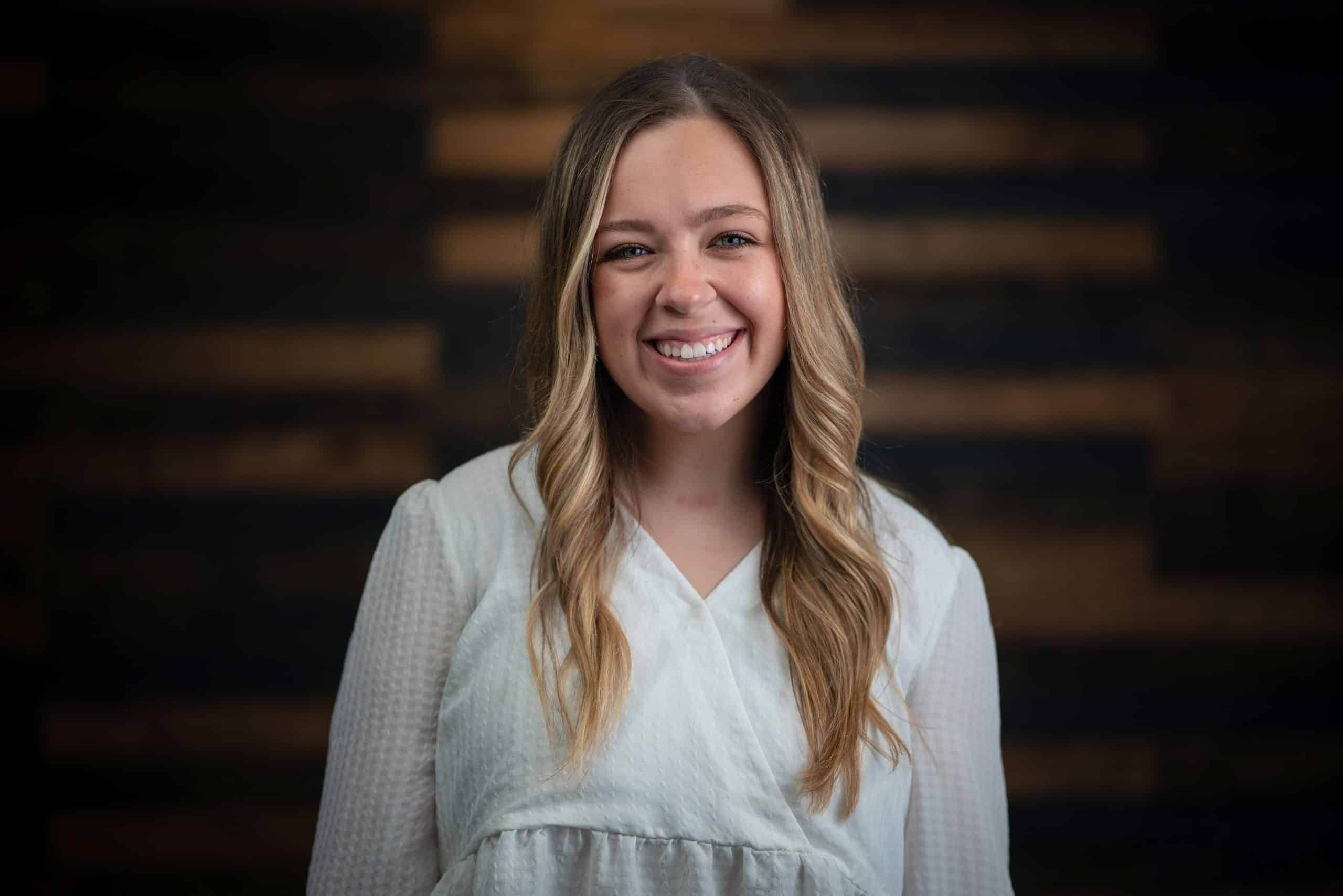Editor’s Note: This interview was adapted from our Ministry Spark webinar, Team Building: Creating Community that Lasts—Part 2 for ease of reading. You can watch the full webinar here.
As ministry leaders, we all work hard to reach kids where they are. And to do that, we work hard to bring on the right volunteers for ministry! In this interview-style article, you’ll hear from ministry leader Kaylee Frank on how she builds strong teams for ministry.
Host, Byron Ragains:
How would you define your kids’ ministry, KidsWorld? Set the stage for your ministry context and where you serve.
Kaylee Frank:
I’m an early childhood pastor at Christ Community Church. We have five campuses right now, and they’re all in the western suburbs of Chicago. We serve children from birth through the end of kindergarten. My energy is on programming, volunteers, and discipleship within that age group. I set some of the pace and the vision for that age range at our other campuses as well.
Our overall kids’ ministry is called KidsWorld and that’s within the context of our Next Gen ministry, which is birth through college.
It’s a fun church to be part of, and I’ve appreciated it more and more as I’ve worked here.
Byron:
Give us an idea of how many people you are leading on your leadership team. How many children would be in your scope of ministry and what about family units? How many families are in your care?
Kaylee:
The early childhood staff consists of a Saturday night coordinator, a nursery coordinator, and a preschool team. Our volunteers have changed over the past year with the pandemic restrictions.
We have about 50 volunteers in preschool ministry who are currently serving, and then we have another 50 in nursery. Between nursery and preschool, there’s 100 who were serving (and are not currently serving) but have plans to return.
As far as kids right now, we have online and in-person ministry. For in-person ministry, we have about 100 kids that are coming to preschool through kindergarten between our three services on the weekend, and another 30 or 40 who are coming that are toddlers and nursery.
There are 60-70 families that are online. That’s birth through kindergarten and those numbers are changing right now because of the way the restrictions are, but that’s an approximate snapshot.
Byron:
How did you get here? Give us your story.
Kaylee:
I grew up at a very small church. There were maybe 150 people, and I was related to most of them. When I was in middle school, I had a friend who invited me to Christ Community. They had just expanded their space for middle schoolers.
I was a committed believer at that point, and I surrendered my life to Christ when I was in fifth grade. I already knew the Lord, but at the small church where I was, there wasn’t much being put into programming for kids and students.
When I came to Christ Community and saw this environment that was for someone my age, it was mind blowing. I continued to come back, and my family slowly transitioned to the church. Ultimately, I grew up here. I was plugged into serving in preschool, and I always knew that I loved working with kids.
At this point, I really started to understand what discipleship looks like for young kids.
This was the first time when I was serving where I was really being poured into by other adults. It wasn’t a teacher, it wasn’t a parent or a family member, it was other adults who were on a team with me and who valued my input and encouraged me. Even today I can remember specific interactions and specific encouragements that some of those adult volunteers gave me.
Personal Growth
I went to college in Nashville at Lipscomb University, and I went in studying pre-med. I wanted to be a pediatrician, and I really enjoyed my science classes at school. As I got into those classes more, I realized I was passionate about working with kids, caring for them, and leading them.
I continued to go through college and experienced a season of discernment. The more I thought about my degree, and through wisdom from people who mentored me, the question that God kept bringing to my head was What are the times in your life where you feel the most like yourself and the most like who I’ve made you to be?
When I thought back on those moments, it was when I was serving in KidsWorld, working at our summer camp, and when I was having the opportunity to talk to kids about Jesus. I prayed about it and then started studying kids’ ministry and had some really cool ministry opportunities in college to work with kids who were hurting in different ways.
Our school partnered with refugee communities, homeless communities, and women and children who were in shelters. I got this wide scope of what it looks like to minister to kids and families in different contexts, which was really eye opening.
When I graduated, it became very clear that God was calling me back to the place that I called home for ministry. It’s been a passion area of mine for a long time, and I love this church and this community. It’s cool now that I get to further my relationship with the people here and lead in this way.
Byron:
Let’s talk about team. How would you define the word?
Kaylee:
It’s people working together for one goal, whether a staff team or a volunteer team. It’s people who are unified toward one goal and are working together to achieve that goal.
Byron:
What are a few patterns, disciplines, or habits that you lean into when leading your volunteers?
Kaylee:
I think the thing that I’ve realized over the past year and a half is that a good team doesn’t just happen. You have to be very intentional in the ways that you lead. I think a lot of us have realized that this year even more.
We’re asking our teams to be extra flexible and minister in ways that they didn’t before. There’s been a lot of change and leading through that change is a new challenge. For me, two things that I always lean into, whether I’m with my team or it’s just during the week, are gratitude and encouragement.
Gratitude
I intentionally look for ways to show my team that I’m thankful for them. I don’t think that you can ever say “thank you” enough to them for serving.
Gratitude is swept under the rug sometimes. Especially when you have really awesome, passionate volunteers who show up, are ready to serve, and are phenomenal. Sometimes we forget that them showing up and serving consistently is a sacrifice of time. It’s a sacrifice of energy, and they’re doing it out of a desire to pour into your team and the kids in your church.
I intentionally look for ways to show my team that I’m thankful for them. I don’t think that you can ever say “thank you” enough to them for serving. It’s something I say 25 times every time I see them on Sunday.
Many times, when we’re running weekend programming, there’s a lot of moving pieces. Something that I like to do after our services on Sunday is to sit down and take five minutes. I think:
- What are the things that stuck out for me today?
- Who were the leaders who I saw going above and beyond?
- Who are the leaders who I saw that seemed tired?
- Who are the leaders I didn’t get as much of a chance as I wanted to talk to and pray for?
I make myself a list so that when I come in on Monday, one of the first things that I do is reach out to those people by making a call, text, email, letter, or whatever it might be in order to say thank you.
Encouragement
My team is a student-led team. Something that I acknowledge for many of them, is this is their first time serving. Because of that, I look for opportunities to call out gifts in them. I do that with my adult leaders too, but especially my student leaders because they’re discovering those gifts in themselves.
I look for opportunities to say, “I see this gift of teaching in you.” or, “I see strong leadership skills in you. And if you’re ever looking for resources on that or other ways that you can lead, I’d love to partner with you.”
I would say gratitude and encouragement are two of the big disciplines that I am always falling back to.
Dreaming and Brainstorming
A new set of disciplines that I’ve realized lately are dreaming and brainstorming with my volunteers. I think that’s been birthed out of the fact that there has been so much change in this past year.
Whether it’s during the week or on the weekends, I’ve made it a discipline to say, “I’m thinking about this. Tell me what you think about it.”
For example, we have a room that we just changed for one of our large group environments. We planned a new stage and had made sketches of everything during the week. Then during the weekend, I brought those sketches to the volunteers and said, “We’re thinking about building this, but you are the ones who are in here and who are going to use it. Look at it, think about how you would use it, tell me what you think, and what it might need. What is missing? What feels strange, and what feels awesome?”
They were able to look at that and pour their thoughts into it, which was helpful. They were a part of it and had some skin in the game of ownership.
It’s fun to brainstorm with them too and hear their perspective on things that are different from a staff perspective.
It is also important to encourage to my own soul. On weekends things can get busy when doing programming. There can be a week where it just does not go the way you think it’s going to go, or things are busier than you anticipate. It is good to have a moment of reflection.

Volunteer Onboarding Kit

Volunteer Onboarding Kit

Volunteer Onboarding Kit
Byron:
How are your volunteers responding to the culture that you’re building?
Kaylee:
One thing I’ve learned is that I want to lead like my mentors. They were modeling what they wanted their team culture to be. I’ve realized through the importance of modeling that I can’t expect my team to be calling out gifts and encouraging each other if I’m not doing that 150%.
I feel like they’re responding to it. It’s taken that much more intention because things have been a little bit smaller. We have a smaller team now, and they’ve had to navigate change, challenges, and things they haven’t navigated before.
I want a team culture that’s full of gratitude and encouragement because I want everyone on our team to know that they’re valued.
It’s been even more important that they’ve relied on each other as a team. It’s been a culture of change this year and we’ve been figuring out how to navigate this change. For me as a leader, it has looked like sitting down for reflective moments frequently. What’s changing? What feels confused? Confused leaders are overwhelmed leaders.
What can I clarify? How can I encourage and pour into what our needs are right now? I feel like they’ve received that. That has led to leaders brainstorming and sharing their own thoughts on what can work.
I want a team culture that’s full of gratitude and encouragement because I want everyone on our team to know that they’re valued.
Team Building
When you’re reflecting on an event, program, your volunteer team, or your ministry, four sets of questions that we as a team ask ourselves are:
- What’s right? What are the good things and the wins and the things that we could be celebrating?
- What’s wrong? What’s not going well?
- What is a challenge, or a tension, that we just really have not worked out yet?
- What’s confusing? There’s been a lot of confusion this year.
A lot of times it just comes back to communicating. I discuss those questions with my staff, and I ask those questions to my volunteers. It provides a good opportunity to get feedback as a leader. If you don’t ask them, they’re not going to realize that they’re confused, and they’re going to keep repeating it.
Byron:
What is it like working with young Gen Z leaders? What do they bring to ministry?
Kaylee:
From what I see with my volunteers in Gen Z, because of the developmental stage that they’re in, I think that they are in a season of looking for identity. This is especially a Gen Z thing: they have access to information and more media than any other generation did at their age. They are looking for big dreams, possibilities, and a big purpose.
When we welcome Gen Z students to our team, it’s an opportunity to speak into them, affirm their gifts, point them to Christ, and help them form identity as a child of God.
Some leaders struggle with having students on their team. But it’s a huge opportunity. Being part of a team is something bigger than themselves. They find purpose in that and want to succeed.
I love ministry, vision casting, dreaming, and brainstorming with Gen Z because they think really big. That’s one of the ways that I see God in them. I think there’s this trust that God is able and that we can accomplish big things when He’s working with us and when He’s leading.
They will be all in if you give them the opportunity.
Byron:
How do you balance the positive tension of creating programming and building into your team?
You can have an impressive program and you can have the most organized curriculum supplies, but if you don’t have volunteers who are invested in teaching kids about Jesus, then all you have is a really good program and there’s not a lasting effect.
Kaylee:
This is something that I’ll always be learning and growing in. What I’ve realized, especially this year, is that the programming can be fantastic but if the people are not bought in on the vision and the mission of the team, then ministry is not really happening.
You can have an impressive program and you can have the most organized curriculum supplies, but if you don’t have volunteers who are invested in teaching kids about Jesus, then all you have is a really good program and there’s not a lasting effect.
I seek out volunteers who have high administrative gifting. They love that behind-the-scenes piece. I use volunteers in their gifts, so that in the limited time that I have, I can be present with them.
Once or twice a year, I meet with my volunteer team, aside from volunteer events and training, one-on-one or two-on-one. People are really hungry for that. Being intentional with my limited time and resources, I have people who I know can help with the tasks, programming, and the administrative things.
I also equip my high-level volunteers to pour into other volunteers, so that it’s not just me. I equip the main leader in my room to have a prayer time with their team before service when they have a check-in. It lessens my load a little bit, and it’s more fruitful for those volunteers.
Byron:
Why do you do volunteer training? Give us a snapshot of what that might look like.
Kaylee:
Our goal is to make volunteers feel inspired. We’re giving them the resources and then supporting them as they go. As far as onboarding, we have an application that is the same for every ministry in our church. It asks things about their spiritual development, spiritual practices, the rhythms of faith that they’re in, and their faith story. We also ask for their current involvement in the church.
That application, no matter what ministry you serve in, stays on your file. We update that every few years to get new information on where they are in their faith and how we can be praying for, encouraging, and supporting them.
There are also some paperwork pieces with that regarding our safety protocols. Then we have a volunteer interview where we sit down with our volunteers and go through a list of questions. You can get into those deep conversations of what God’s doing in your life. This helps with volunteers you don’t know.
It’s an opportunity to have someone who’s going to pray for you, be there for you, and encourage you.
Training
Then we have training, and we’re experimenting with training and what that looks like right now using some online platforms. Training is a one-on-one experience. I share the values and mission of our ministry, while pointing out the role and the expectations that come with the role. We talk about really practical things, big picture things, being a part of a team, and expectations.
These are the things that I need to see in a leader, so that they can fully contribute and thrive on the team. We don’t have a formal process where we have them take a spiritual gifts test or anything like that. That’s where that relationship piece is important because it’s in those conversations that you begin understanding your gifting if you don’t know it already.
They can come in and observe as visitors if they are not familiar with our ministry. We try to help them find an area that fits with their giftings and where they will feel passionate, because it’s something that excites them.
We also have yearly training that is all around vision casting. It’s a rally with all of our volunteers together and we fan the flames of what we’ve seen God do in our ministry in the past year and what we want to see God do in our ministry in the next year. We pray about that.
Throughout the year there’s volunteer appreciation events to get together and tell them thank you in a small way and give them a chance to talk to each other.
Byron:
Lastly, what are your quick thoughts on recruiting volunteers?
Kaylee:
Recruiting is challenging for me because I have a hard time asking people if they want to serve—especially when it’s parents. Many of them are coming to church and dropping off their kids so that they will have 90 minutes with no children. It’s something that I pray about daily. Who can I bring in?
When I’m walking around the building or when I’m talking to people, I try to ask God that He’ll give me eyes to see who might be hungry to be a part of this ministry.











